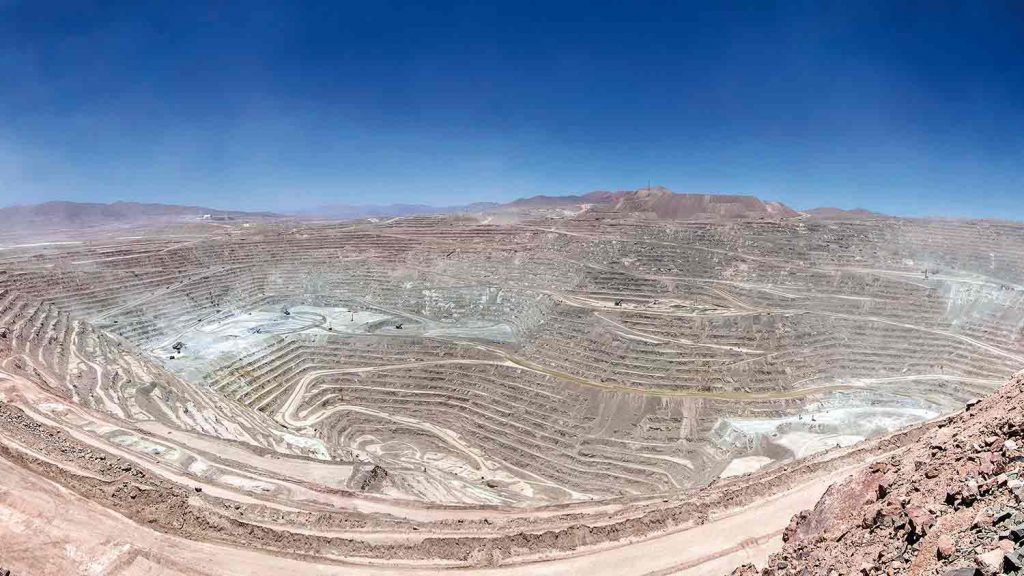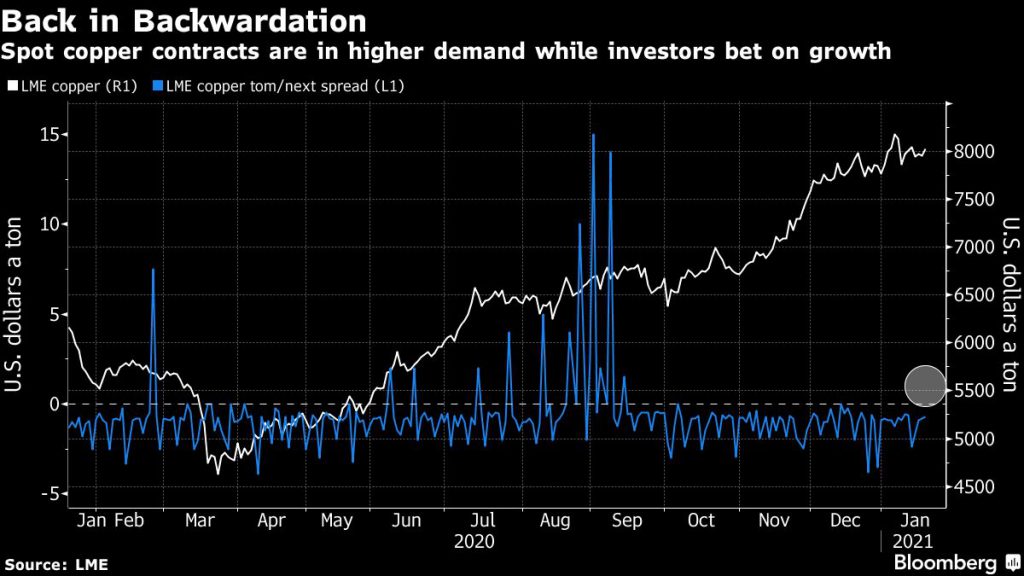Chile’s copper output may suffer if pandemic drags on

Top copper producer Chile managed to navigate the pandemic disruptions that stalled mining in other countries, churning out more metal last year than in 2019.
That helped keep Chinese refineries supplied at a time of market tightness and high prices. But while Chile is well prepared to operate through a second wave of infections, eventually output could suffer, according to a group representing industry heavyweights.
Mines such as BHP Group’s Escondida and those run by state-owned Codelco are reinstating restrictions used in the initial phase of the pandemic — such as demobilizing some workers and asking others to work remotely — to safeguard staff and maintain operations as infection rates rise in Chile. They can do that by delaying non-essential activities such as maintenance and earthwork preparations.
Chile, which accounts for a quarter of the world’s mined copper, produced just over 5.8 million metric tons last year
“If the pandemic lasts another year or six months, then those measures imposed at mines eventually could impact production,” said Joaquin Villarino, who heads Chile’s Mining Council.
Chile, which accounts for a quarter of the world’s mined copper, produced just over 5.8 million metric tons last year, Villarino said in an interview with the Pauta Bloomberg radio show, citing data from government agency Cochilco. That’s in line with projections and similar to, or slightly higher than, 2019 levels, he said. The government’s statistics bureau is scheduled to release December copper production on Jan. 29.
If the industry and individuals continue to adhere to measures adopted last year, Chilean mines should be able to continue operating even as the country endures an increase in infections, he said. Still, the virus and its outcomes are unpredictable and the industry remains highly cautious.
The sector has offered to help the government roll out vaccinations, although miners don’t have priority over other workers in the country, Villarino said.

Copper futures have surged to multi-year highs, trading at about $3.64 a pound on Wednesday, on recovering Chinese demand, lingering supply disruptions and dollar weakness. But Villarino is “sober” on whether the metal has entered a new super-cycle, with fundamentals indicating a long term price closer to $3 than $4, he said.
While prolonged periods of high prices generate more wage pressures, unions in Chile know prices are cyclical and that operations have to be sustainable long term, he said, referring to a slew of collective bargaining processes.
High prices are a good sign for Chile’s investment prospects but aren’t the only variable when making decisions, with political and social stability also considerations, he said.
With Chile about to draft a new constitution, Villarino said the country has a chance to enhance its international reputation if the process is undertaken in a framework of respect and openness, with scope to move ahead in the areas of environmental protection and indigenous rights.
(By James Attwood, with assistance from Eduardo Thomson and Winnie Zhu)
More News
{{ commodity.name }}
{{ post.title }}
{{ post.date }}

Comments